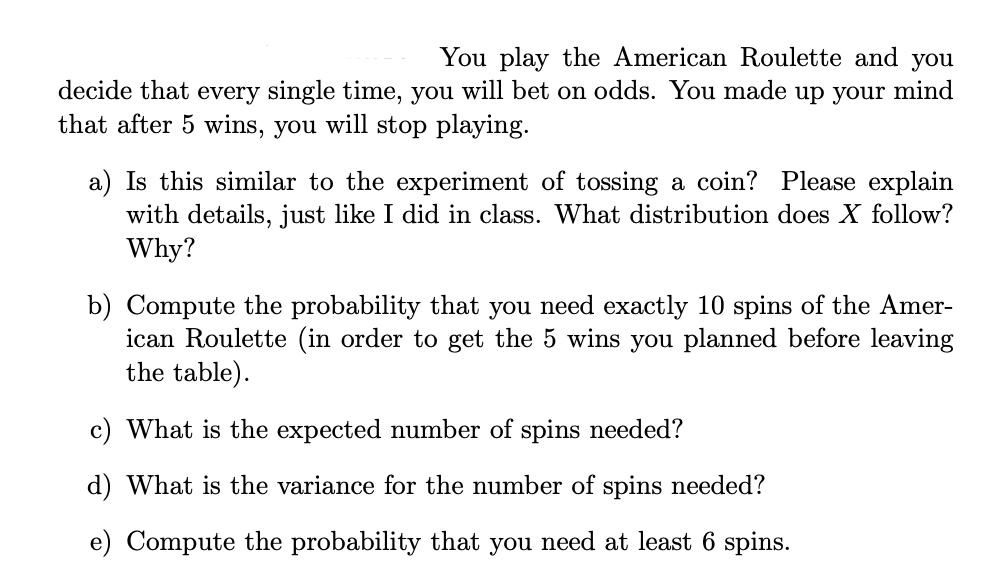It's a simple enough question and one every bookie gets asked. How do we set the odds on Inter not losing at home again or Wigan sneaking victory over title-chasing Arsenal. Well it goes a little like this.
Feb 28, 2021 American odds (aka moneyline odds or US odds) are popular in the United States. The odds for favorites are accompanied by a minus (-) sign, indicating the amount you need to stake to win $100. Well it goes a little like this. There are a team of people employed by any bookmaker, usually referred to as Traders, Risk Analysts or Odds Compilers. Their job is to produce odds that closely. How Are Odds Determined? Odds are engineered to attract equal action on both sides of a betting line. In a perfect world, a sportsbook receives equal betting volume on both sides of a wager then, win or lose, they’ll make 5-10% on the juice (or ‘vig’).
There are a team of people employed by any bookmaker, usually referred to as Traders, Risk Analysts or Odds Compilers. Their job is to produce odds that closely represent the chance of an occurrence.
It’s a tough job to account for all the variables in any event. If you take the chance of Manchester United winning at home for example the trader has to account for the form of the teams, injuries to key players, influence of the crowd, the referee and many others.
In addition to the chances of a team winning, they have to account for the money that is likely to be placed. In the Manchester United example, most people would back the Red Devils to to win at Old Trafford and therefore the odds will be shorter than perhaps the precise chances of victory.
Betting Odds Georgia Senate
Also like any other business a bookmaker has to make money so the Trader will add a small percentage to a ‘book’ in order to generate this profit. In a match between two evenly matched teams on a neutral ground the odds might look something like the following:
7/4 (2.75) | Team A | 36.36% chance of winning |
13/5 (3.60) | Draw | 27.7% chance of winning |
7/4 (2.75) | Team B | 36.36% chance of winning |
This adds to approximately 100% and trading books like this, the bookmaker should break even over a period of time. So what they have to do is skew the odds slightly in their favour:
6/4 (2.50) | Team A | 40% chance of winning |
12/5 (3.40) | Draw | 29.4% chance of winning |
6/4 (2.50) | Team B | 40% chance of winning |
Now the bookmaker has a 9.4% profit margin and should make a profit over time although to the punter of course it’s all about making a profit on the game itself! A bookmaker will trade a market at anywhere between 101 and 120% profit depending on the market and competitor activity.
That means that in a perfect world (which doesn’t exist) the bookmaker should make between £1 and £20 for every £100 that are gambled on the market. What happens in reality however is that most money is gambled on the favourites and it’s when the favourites fail to win, that the bookmakers make their money.

David Mole is Goal.com's Betting and Odds Expert. He has previously worked for Betfred, Victor Chandler, William Hill and Totesport.
Have you got a question for our betting expert? We'll pick out the best ones every week.
Betting odds explained
Betting odds can appear daunting at first glance but they are actually quite straightforward to calculate. We’ve devised a beginners guide to explain betting odds.
How do odds work?
When looking at the odds (price) of a horse, the two formats used are decimals and fractions. Betting exchanges operate in decimals, whereas fixed-odds betting firms generally operate in fractions.
How Odds Are Made

When determining the returns of a fractional bet, the second number always suggests the stake and the first number denotes what the profit will be if the bet wins. Take 4/1 as an example. If you stake £1 on a horse, then you stand to win £4 if the selection wins the race, which excludes your initial stake. In contrast, the decimal format factors in the initial stake. Betting odds of 4/1 would equate to 5.0 in decimal terms, 5/1 would be 6.0, and so forth.
See the chart below for a breakdown of betting odds in both fractional and decimal format, showing forecasted returns to £5 level stakes for the key prices in a market.

Knowing your odds
How Betting Odds Are Made Crossword
| wdt_ID | Fractional | Decimal | WIN RETURNS FROM £5 (inc. stake) |
|---|---|---|---|
| 1 | 1-2 | 1.5 | £7.50 |
| 2 | 4-7 | 1.57 | £7.86 |
| 3 | 8-13 | 1.62 | £8.08 |
| 4 | 4-6 | 1.67 | £8.33 |
| 5 | 8-11 | 1.73 | £8.64 |
| 6 | 4-5 | 1.80 | £9.00 |
| 7 | 5-6 | 1.83 | £9.16 |
| 8 | 10-11 | 1.91 | £9.55 |
| 9 | 1-1 | 2.00 | £10.00 |
| 10 | 11-10 | 2.10 | £10.50 |
If you want to work out your winnings from a multiple bet such as an accumulator or lucky 15, you can use our betting calculator to find out instantly what you’ve won.